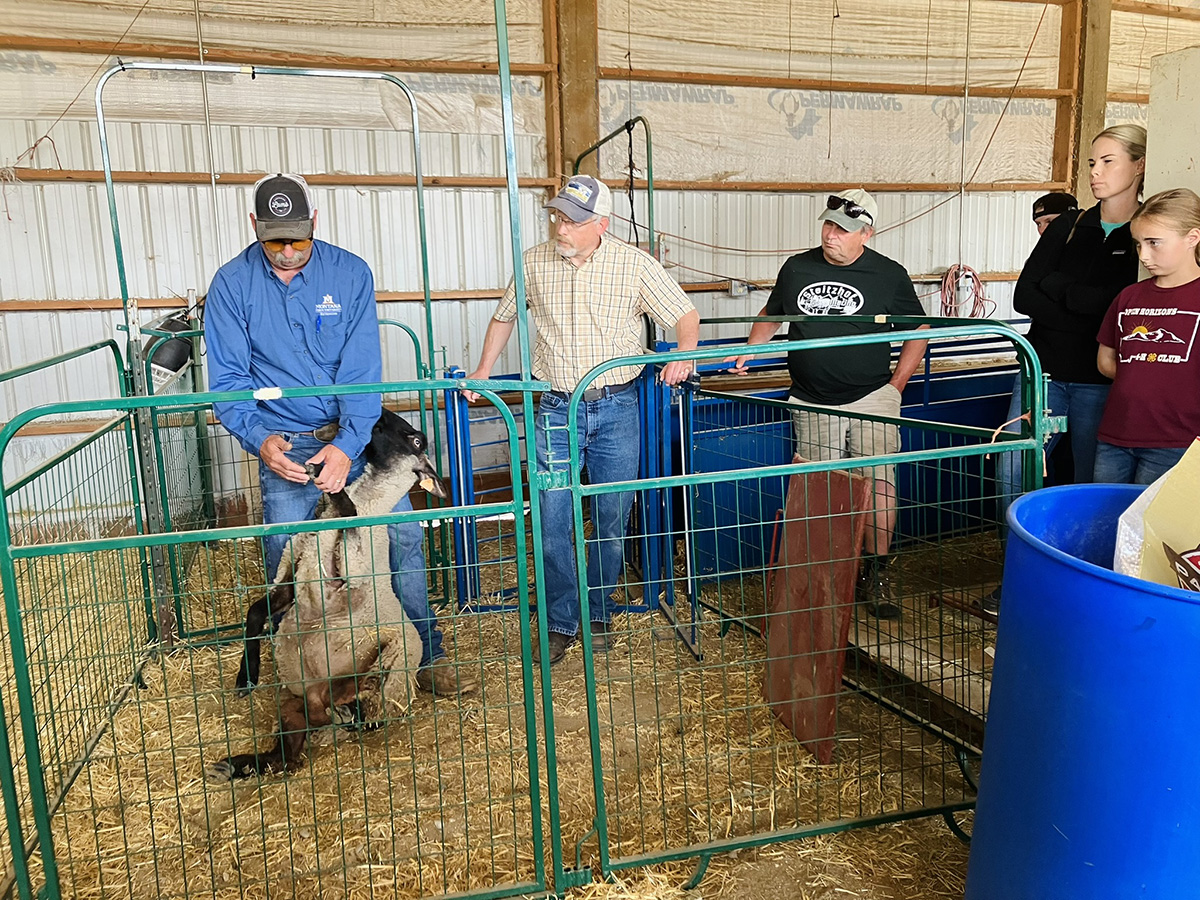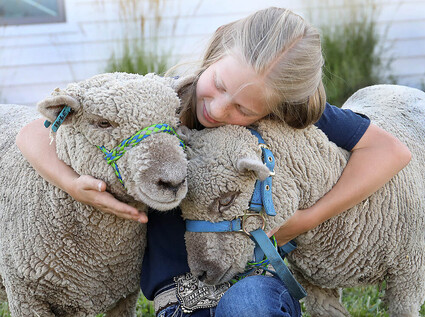Sanders County
2023 MSU Extension Highlights
2023 MSU Extension Highlights
MSU Extension in Sanders County provides educational programs in the areas of Agriculture, Horticulture, Natural Resources, 4-H Youth Development, Community Development, and Family and Consumer Sciences. Sanders County is located in Northwestern Montana. It is bordered on the west by Idaho’s Panhandle and is Montana’s 15th most populous county with a population of about 12,400. There is a diverse mix of agricultural land, small acreage subdivisions, rural communities and range or forested land. The highest number of jobs are in farming, fishing, forestry, and construction. Sanders County includes the city of Thompson Falls as the county seat, Plains, Hot Springs, Dixon, Trout Creek, Noxon, and Heron. Sanders County is supported by Commissioners Anthony Cox, John Holland and Dan Rowan.
Family & Consumer Science
Promoting Healthy Lifestyles with SNAP-Ed
The Supplemental Nutrition Assistance Program-Education (SNAP-Ed) played a pivotal role in promoting health and wellness within the community through classes emphasizing the significance of good nutrition, physical activity, food resource management, and food safety. A diverse audience including SNAP-eligible adults and elementary students were all able to benefit from class attendance. Throughout the grant year, a total of 99 SNAP-Ed classes were conducted. Collaborating closely with local organizations and partnering with four school districts, these classes prioritized healthier lifestyles. Notably, even individuals residing outside areas directly served by SNAP-Ed were able to participate in a virtual 9-week class series. This series, focused on healthy meal planning, offered a flexible self-paced learning experience, complemented by interactive weekly check-in webinars hosted by the SNAP-Ed instructor. Beyond classroom education, SNAP-Ed took part in promoting the county’s WINter Wellness Program. This endeavor was strategically designed to amplify physical activity among community members, gathering support from local businesses that contributed prizes to motivate the 68 participants. Guided classes, including offerings like Hiking 101 and Resistance Band Training, equipped participants with exercise skills to sustain physical activity. Looking ahead, Sanders County SNAP-Ed remains committed to supporting and expanding such impactful projects providing knowledge and resources to improve health outcomes.

Caption: SNAP-Ed provides physical activity opportunities for elementary students
Credit: snaped.fns.usda.gov
Agriculture & Natural Resources
Forest Fun and Education Planned for the Community
Community groups came together for a day of education and fun in the forest on Saturday, September 17th at the Mule Pasture in Thompson Falls. The Forest Fest is an outdoor educational event for forest land owners and those who enjoy living near the forest. It was a free event offering demonstrations, information, games and activities for all ages. Booths were set up from various local organizations along with a kids’ activity area, first aid station and a welcome table. Demonstration stations were located along the trails just a short walk from the booth area. Presentations at the Forest Fest included wildfire management, wildlife management, hiking and backpacking, plant and weed identification, and U.S. Forest Service practices. Demonstrations were also available on horse packing, crosscut sawing, using a sawmill and from the University of Montana Woodsman Team. Peter Kolb, MSU Extension Forestry Specialist discussed forest management and dealing with pest and disease at the Harlow Bison Ranch and Tree Farm after sessions ended at the Mule Pasture.

Caption: Forest Fest Content
Credit: Kayla Mosher
Agriculture & Natural Resources
Northwest Montana Sheep & Goat Workshop
Northwest Montana counties hosted a sheep and goat workshop for producers on Saturday, May 20th in Kalispell at the High School Agricultural Sheep Center. This workshop was for all sheep and goat types including meat, dairy and hair breeds. Presentations included information on parasites and disease, vaccine protocols, lambing, nutrition, shearing, wool quality, grazing as well as direct marketing and agritourism. Guest speakers included MSU Sheep Specialist Brett Roeder, Mission Mountain Food Enterprise Center Director Jan Tusick and Montana Agritourism Fellow and Montana Farmers Union Ambassador Carissa McNamara.

Caption: Hoof Trimming Demonstration
Credit: Juli Thurston
4-H & Youth Development
There's a New Breed in Town
One Plains girl might be a bit sheepish when talking with adults, but when it comes to showing sheep, she can be quite talkative. Ayla Rehbein of the South Side Sparks 4-H Club showed her newest breed of sheep this year, Olde English Babydoll Southdown sheep competing in the fiber class category at the fair. One of the oldest of the English breeds of sheep is the Southdown, originating on the South Down hills of Sussex County, England. These small sheep were know for their extreme hardiness and produced meat with unmatched tenderness and flavor then any other breed of sheep. She initially got the wether - neutered males - babydoll sheep as pets, but she has also had them sheared and sold their wool online and locally. Babydoll sheep wool is extremely soft with a cashmere quality. Babydoll fleece also has more barbs per inch than any other wool type, making it ideal for blending with other fibers. She got them as lambs and they're now 18 months old. She likes this breed because they are smaller than other sheep breeds. While other sheep weigh an average of 140-150 pounds, the babydolls weigh about 80 pounds and they are only about 24 inches tall. In 1780 John Ellman, realized the potential of these animals and set out to standardize the Southdown breed. In England, these small Southdowns grew in popularity up until 1908 when there were approximately 367 registered flocks totaling about 110,000 ewes. The growth in this breed’s development slowed in the early 1900s as World War I brought a sharp decline in their numbers. By the end of the World War II, the demand for larger cuts of meat had almost forced the breed into extinction.

Caption: Ayla and her Babydoll Sheep
Credit: Ed Moreth
Contact
2504 Tradewinds Way Ste 1B
Thompson Falls
406-827-6934
https://www.montana.edu/extension/sanders/
Montana State University Extension is an ADA/EO/AA Veteran’s Preference Employer and provider of educational outreach.

